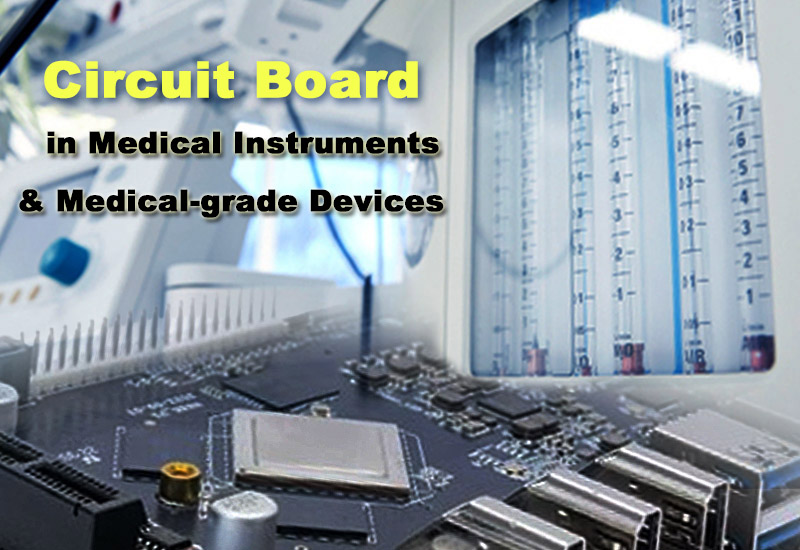
Biocompatibility means that a material will not cause adverse reactions or damage when in contact with living organisms. Choosing PCB materials that comply with relevant biocompatibility certifications can ensure that medical instruments have no negative impact on the human body during use.
When medical equipment operates in high-temperature environments, PCB fabrication must have good high-temperature resistance, such as sterilization processes, high-temperature disinfection, etc. Choosing PCB materials with good high-temperature resistance can ensure that medical circuit boards can operate normally, without being affected by problems such as thermal expansion, deformation, or failure.
Medical apparatus comes into contact with a variety of chemicals, including disinfectants and medications. Therefore, circuit boards must have good chemical corrosion resistance to prevent corrosion and damage to circuit boards by chemical substances, thereby ensuring long-term stable operation of medical equipment.
The circuit board must have good electrical properties, and PCB materials with low dielectric constant and low loss are selected to meet medical equipment's signal transmission and power consumption efficiency requirements. Low dielectric constant can reduce signal attenuation and crosstalk in signal transmission, and improve the quality and stability of signal transmission. Low loss can reduce energy loss and heat generation, and improve electronic equipment's power consumption efficiency and working stability.
Medical-grade devices may be subject to shock or vibration. Choosing PCB with good mechanical strength and impact resistance can increase medical electronic equipment's structural stability and shock resistance and reduce circuit board rupture, solder joint breakage, or damage caused by shock or vibration.
PCB must have good solderability, can combine well with welding materials (such as solder) during the welding process, and form stable solder joints to reduce the risk of welding defects and welding failures to meet the needs of medical circuit board equipment during the welding process.
In the process of PCB design and fabrication, it is necessary to comprehensively consider the performance, quality, and cost of medical equipment to improve the competitiveness of electronic equipment.

FR-4 is one of the most common PCB materials with good mechanical and insulation properties. FR-4's flexibility and bendability make it suitable for medical devices that require compact designs and special shapes, while its good insulation properties help ensure the safe and reliable operation of medical electronics. FR-4 is commonly used in medical equipment to connect various sensors, controllers, and displays.
Flexible aluminum PCB has excellent heat transfer properties and can effectively dissipate heat to ensure stable performance of the device during high-load operation. In electronic medical equipment such as scanning and surgical lighting, the application of flexible aluminum PCB has significantly improved the equipment's operating efficiency and stability.
Polyimide circuit board has very high heat resistance, chemical resistance and mechanical strength. It has a wide range of applications in the medical field and can be used in various medical devices that require high performance, high stability, and durability. Polyimide PCB application details are as follows:
· Suitable for medical imaging equipment, such as X-ray machines, magnetic resonance imaging (MRI) equipment, computed tomography (CT) equipment, etc. These devices often require high-performance electronic components to process and transmit image signals.
· Suitable for monitoring physiological parameters inside the organism, such as blood pressure, blood oxygen saturation, electrocardiogram, etc. These sensors require high-stability, corrosion-resistant circuit boards to ensure reliable data collection.
· Suitable for electronic treatment equipment, such as electric stimulators, pulse therapy equipment, etc. Polyimide PCB material provides stable circuit support in these devices to ensure the effectiveness and safety of treatments.
· Suitable for diagnostic equipment such as blood glucose monitors, biochemical analyzers, etc. that require accurate electronic measurement and analysis functions.
PTFE material has low loss, excellent dielectric constant, and dielectric loss tangent, which can effectively reduce energy loss during signal transmission and improve signal transmission efficiency and quality. Therefore, PTFE is chosen to be used in medical equipment to manufacture medical electronic circuit boards, which are suitable for some medical equipment with high-frequency and high-speed transmission requirements, such as radio frequency signal transmission.
PCB microcircuit has good electrical properties and can support various complex electronic functions in medical equipment, especially in the field of small medical equipment, such as industrial sensors.
PCB microcircuits can be designed to be very small, and suitable for integrated circuits in small medical devices or medical devices that require curved or curved designs, such as wearable technology and hearing aids.
Rigid-Flex PCB is a composite PCB structure that combines the characteristics of flexible PCB and rigid PCB. Therefore, it has high durability and can withstand a certain degree of bending and twisting without damaging the circuit. It can adapt to compact and complex design requirements in medical equipment. Therefore, it is widely used in various medical equipment, such as implantable medical devices, portable monitoring equipment, medical imaging equipment, etc.
